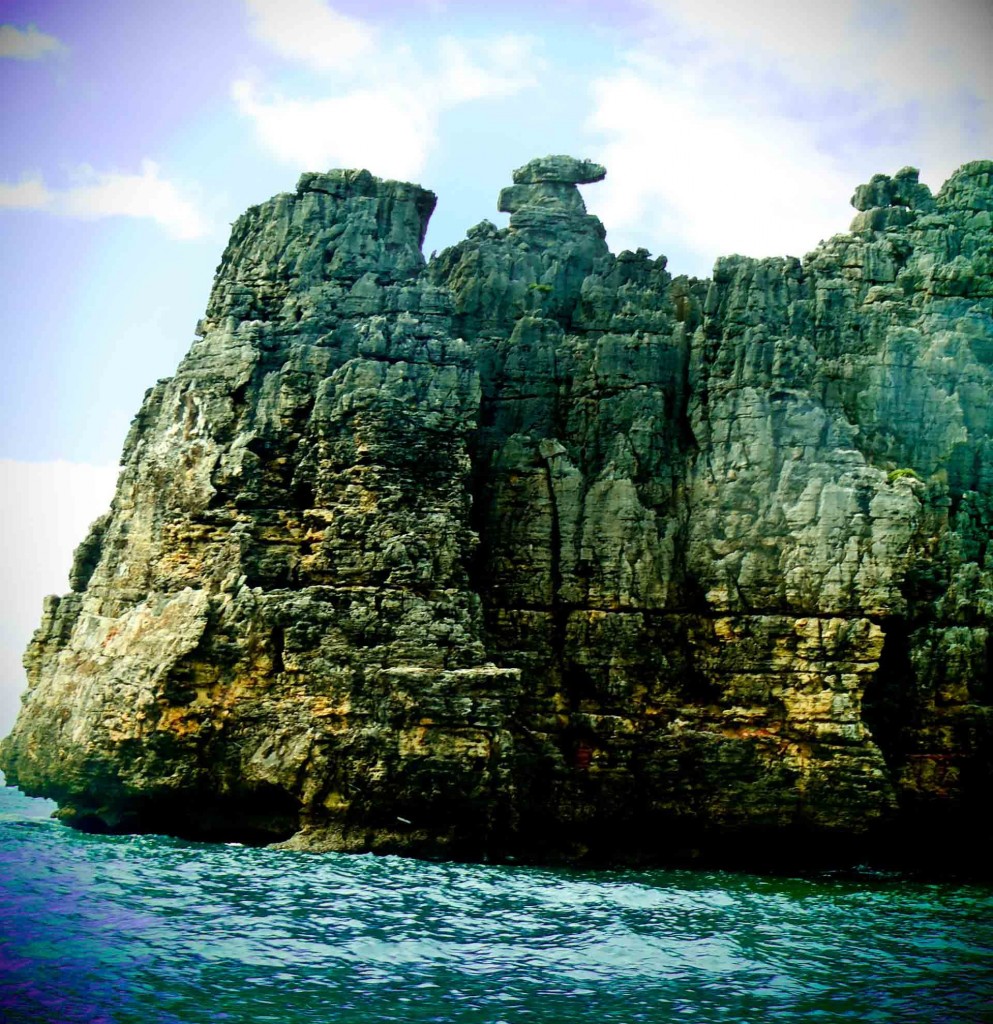by Charlie Gough, Marine Officiary Scientist, Madagascar
Having been part of the Blue Ventures research teams that have surveyed coral reefs from the Androka region south of Toliara all the way up the west coast, to the most recent surveys in the Barren islands of Maintirano, I was exceptionally excited to be asked to join a team of scientists from WWF, Conservation International and Madagascar National Parks to help undertake marine resilience surveys in the Nosy Hara archipelago of north west Madagascar, as part of the WWF project “Climate Change adaptation in outstanding places” funded by the European Union.
There are 12 islands in the archipelago each having the typical ‘tsingy’ or eroded limestone pillars typical of northern Madagascar. This karst geomorphology is the result of rain and sea water dissolving the surface of the rock surface along its many fractures. Over time these fractures widen as the rock continues to dissolve and the islands become the beautiful jagged and toothy structures that we see today.
The research team however is here, not to stare in wonder at the beautiful rock formations of the islands but instead to investigate the living rocks, or corals that lie under the waves and give these islands their name (Nosy Hara is translated as coral Island). We are here to conduct a study to understand how these reefs, their coral and fish communities may be vulnerable to climate change.
Resilience is the ability of an ecosystem to resist stress and regenerate following natural and human-induced disturbances. For a coral reef this means the ability of the reef to recover following recurrent disturbances, where coral communities can be rebuilt rather than becoming overgrown or out-competed by fast growing algae. A characteristic of reefs that will become ever more important as climate change brings increasingly higher sea surface temperatures and more frequent and intense cyclones to the western Indian Ocean region.
Several factors which critical to maintaining reef resilience are included in the study which uses protocols developed by CORDIO and the IUCN Working Group on Climate Change and Coral Reefs. The surveys include methods to measure benthic community structure, coral recruitment and coral population structure, as well as looking at reef fish populations their trophic structure and biomass.
Many coral reefs in the world, including these in Nosy Hara, have to deal with multiple stressors at the same time, including threats from high sea surface temperatures, overfishing, pollution, and sedimentation. Nosy Hara’s coral community currently shows little significant physical damage, with low levels of bleaching induced mortality, and an abundance of large healthy coral heads, indicating that a substantial period of time has passed since the last disturbance.
A healthy coral reef fish and invertebrate community, with apex predators and herbivores that graze on algae, helps an ecosystem to recover quickly following a destructive disturbance. However fish populations in Nosy Hara appear to be quite heavily affected by local exploitation with fish communities dominated by small bodied fish (with more than 90% of fish smaller than 20 cm), low biomass (around 260 kg ha-1), and high trophic level fish groups (Groupers, Snappers, Jacks and Trevallies) being notable almost entirely by their absence, a common effect of high fishing pressure.

The abundance of small bodied fish is a warning that the larger, predatory fish are missing from the reefs
Healthy fish populations are fundamental to maintaining reef community structure and in preventing benthic phase shifts from coral to algal dominance. This is of particular concern for the reefs of Nosy Hara, as although recent events have left these reefs somewhat protected and there have been no direct impacts from bleaching or cyclone damage in recent years the increasing likelihood of an event similar to that which caused mass mortality in 1998, or other climate related events, could result in these reefs finding it difficult to return to a coral dominated state, and instead find themselves forced into a phase shift, dominated by very different assemblages.
In the absence of any major destructive disturbances in recent years it is difficult to say definitively how reefs may be affected in the future. However, it is clear that park managers (Madagascar National Parks) and local communities need to improve compliance with protection efforts to enhance reef fish populations not only for the healthy functioning of the reefs but also for the health and economies of local communities who rely on these reefs productive resources for food and income. Further climate vulnerability studies are to be conducted by WWF Madagascar in coming months.



